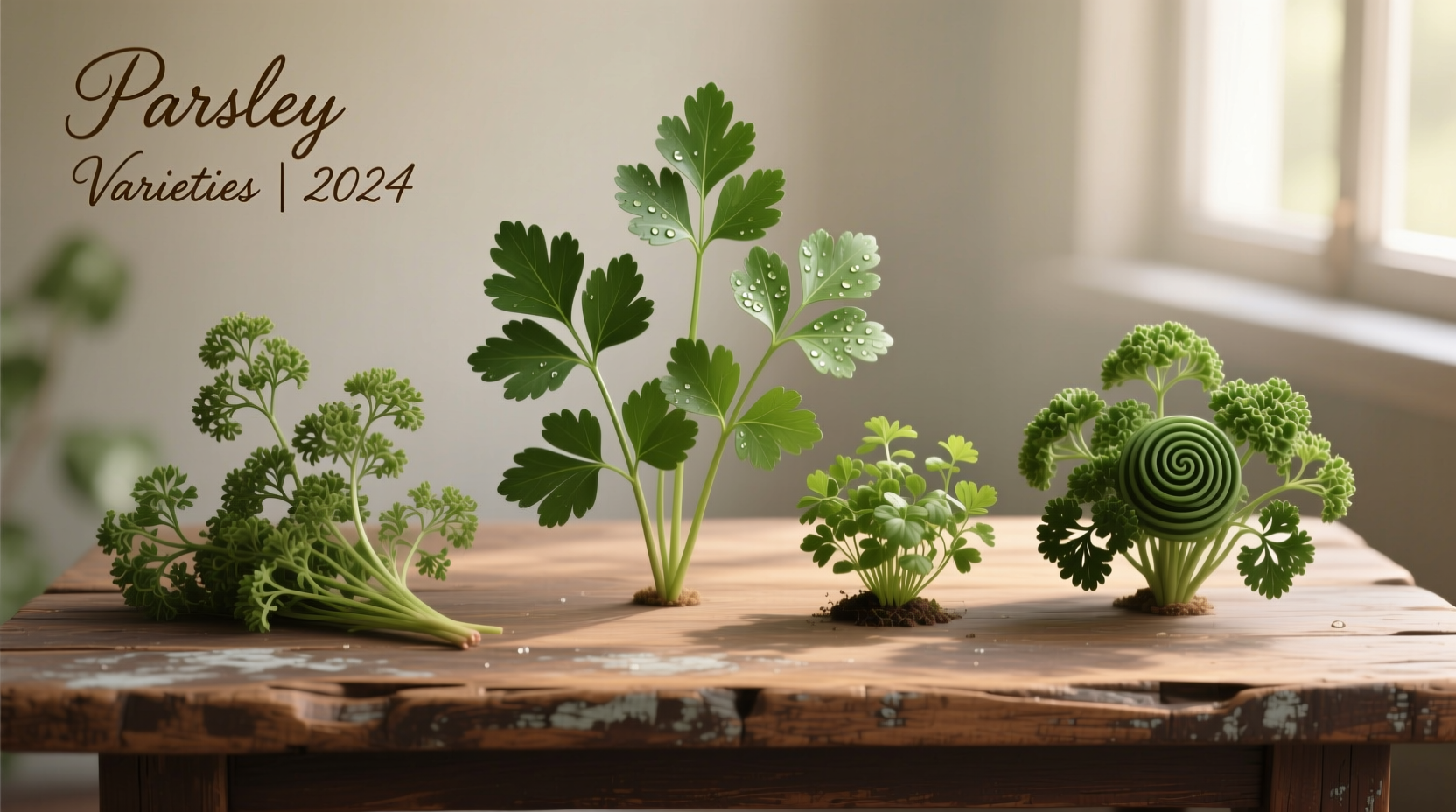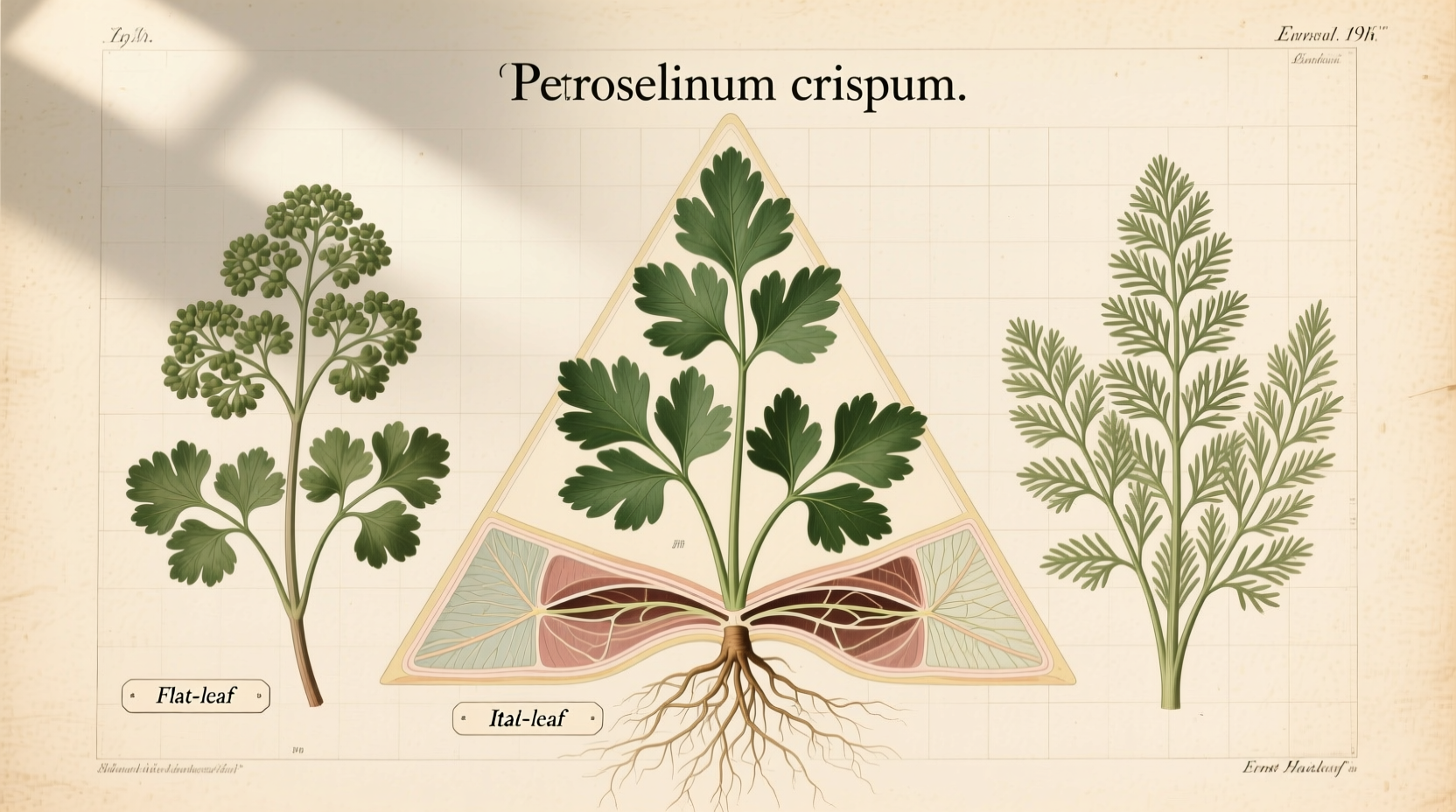When you reach for parsley in your kitchen or garden, knowing exactly which variety you're working with transforms ordinary dishes into extraordinary creations. Most home cooks only recognize one or two types, missing out on the nuanced flavors and applications each variety offers. This guide reveals the distinctive characteristics, culinary strengths, and growing requirements of each parsley type—helping you make informed choices whether you're garnishing a dish or planning your herb garden.
Why Parsley Variety Matters in Your Kitchen
Parsley isn't just a garnish—it's a flavor foundation in cuisines worldwide. The type you choose affects taste intensity, texture, and how well it withstands cooking. Professional chefs maintain multiple parsley varieties because each serves specific purposes. Flat-leaf stands up to long cooking times in sauces and stews, while Curly provides visual contrast in finished dishes. Selecting the right type elevates your cooking from good to exceptional.
The Two Main Categories: Flat-Leaf vs. Curly Parsley
Most gardeners and cooks encounter these two primary categories first. Though they belong to the same species (Petroselinum crispum), their differences significantly impact culinary applications.
Flat-Leaf (Italian) Parsley
With its broad, flat leaves and robust flavor, this variety dominates professional kitchens. Its stronger taste holds up during cooking, making it ideal for sauces, soups, and Mediterranean dishes. The University of California Agriculture and Natural Resources notes that flat-leaf contains higher concentrations of essential oils than curly varieties, explaining its more pronounced flavor profile. Gardeners appreciate its slightly better heat tolerance compared to curly types.
Curly Parsley
Recognizable by its ruffled, dark green leaves, curly parsley offers a milder flavor that works well as a garnish or in fresh applications. Its texture holds dressings better than flat-leaf, making it preferable for tabbouleh and other fresh herb salads. According to the USDA's Plant Database, curly parsley's compact growth habit makes it popular for container gardening and border edging in ornamental gardens.
| Characteristic | Flat-Leaf Parsley | Curly Parsley |
|---|---|---|
| Flavor intensity | Strong, robust | Mild, delicate |
| Best culinary uses | Sauces, stews, cooking applications | Garnishes, fresh salads, visual appeal |
| Leaf texture | Smooth, flat | Ruffled, curly |
| Heat tolerance | Moderate to high | Moderate |
| Storage longevity | 7-10 days refrigerated | 5-7 days refrigerated |
Specialty Parsley Varieties Worth Knowing
Beyond the common supermarket varieties, these specialty types offer unique culinary possibilities:
Japanese Mitsuba (Cryptotaenia japonica)
Often called Japanese parsley, Mitsuba belongs to a different botanical family but serves similar culinary functions in Asian cuisine. Its delicate, fern-like leaves and hollow stems deliver a distinctive celery-parsley hybrid flavor. The Missouri Botanical Garden confirms Mitsuba thrives in partial shade and cooler temperatures, making it suitable for spring and fall growing in most climates. Chefs use it in miso soups, noodle dishes, and as a fresh garnish for sushi.

Hamburg Parsley (Petroselinum crispum var. tuberosum)
This lesser-known variety features both edible leaves and a substantial root. The root resembles a parsnip but offers a distinct parsley flavor. Originating in 16th century Germany, Hamburg parsley was documented in early European herbals as both a culinary and medicinal plant. According to the Royal Horticultural Society, the roots develop best in loose, stone-free soil and require a full growing season to reach optimal size. The leaves resemble flat-leaf parsley but with slightly thicker stems.
Choosing the Right Parsley for Your Needs
Your selection depends on three key factors: intended use, growing conditions, and flavor preferences.
Culinary Applications Guide
- For cooking: Flat-leaf parsley withstands heat best in sauces, soups, and braises
- For garnishing: Curly parsley provides visual contrast and holds shape
- For fresh dishes: Both flat-leaf and curly work in tabbouleh or chimichurri
- For Asian cuisine: Mitsuba offers authentic flavor in soups and salads
- For root vegetables: Hamburg parsley provides dual-purpose harvest
Growing Considerations
Parsley grows as a biennial but is typically grown as an annual. All varieties prefer moist, well-drained soil with partial sun. Flat-leaf generally tolerates heat better than curly varieties. The Cornell University Cooperative Extension notes that parsley seeds have low germination rates and benefit from soaking before planting. For continuous harvest, plant new seeds every 3-4 weeks throughout the growing season.
Avoiding Common Parsley Mistakes
Even experienced cooks make these errors with parsley varieties:
- Using curly parsley in cooked dishes where its delicate flavor disappears
- Substituting flat-leaf for curly in garnishes (its darker color lacks visual pop)
- Harvesting too aggressively, weakening the plant's regrowth potential
- Confusing cilantro with flat-leaf parsley (cilantro has more pointed leaves)
- Storing parsley without proper moisture control, causing rapid wilting
Preserving and Using Your Harvest
Maximize your parsley's shelf life with these professional techniques:
- Store stems in water like flowers, covered loosely with a plastic bag
- Freeze chopped parsley in olive oil cubes for cooking applications
- Dry leaves away from direct sunlight to preserve flavor compounds
- Harvest in the morning when essential oil concentration peaks
- Never wash parsley before storage—moisture accelerates spoilage
Conclusion: Elevate Your Cooking with the Right Parsley
Understanding the four main parsley types transforms how you approach cooking and gardening. Flat-leaf delivers robust flavor for cooked dishes, curly provides visual appeal as garnish, Mitsuba offers Asian culinary authenticity, and Hamburg gives you dual-purpose harvest. By matching the variety to your specific needs, you'll create more flavorful dishes and maintain healthier plants. Keep this guide handy when shopping for seeds or selecting bunches at the market—your palate will thank you.











 浙公网安备
33010002000092号
浙公网安备
33010002000092号 浙B2-20120091-4
浙B2-20120091-4